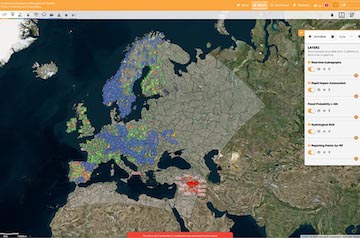Over the last decades severe fluvial floods of trans-national dimensions have taken place in Europe.
There is evidence that in particular transboundary floods can be more severe in their magnitude, affect larger areas, result in higher death tolls, and cause more financial damage than non-shared riverine floods do. The European Environmental Agency estimated that floods in Europe between 1998 and 2002 caused about 700 deaths, the displacement of about half a million people and at least 25 billion Euros in insured economic losses (EEA, 2003). Some river basins suffered repeated flooding within a time span of a few years only – for example the Rhine and Meuse floods in 1993 and 1995 or the Po floods in 1994 and 2000. The disastrous floods in the Elbe and Danube basin in summer 2002, acted as a wake-up call for the National Authorities as well as the European Commission to investigate new strategies for flood prevention and protection, with focus on co-ordinated actions among countries sharing the same river basin. Shortly after the 2002 floods, the European Commission announced in the communication COM(2002)-481 the development of a European Flood Awareness System (EFAS). Since then, Europe has been hit by several major flood disasters such as the Elbe and Danube floods in 2006 and the Central European floods in 2010 affecting mostly Poland but also the Czech Republic, Austria, Hungary and Slovakia.
EFAS is part of a strategy for improved disaster management in Europe to reduce the impact of transnational floods through early warning.
First of all, the aim of the system is to provide, useful, complementary and shared information on upcoming flood events to the national hydrological services. Furthermore, EFAS provides a unique and coherent overview on ongoing and forecast floods across Europe, which is needed for improved coordination of international civil protection actions on European scale during severe flood events.

